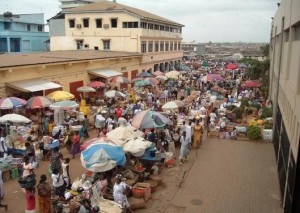New ECA social development Index finds Africa poorer now than 20 years ago
 Africa has been found to be poorer now than the continent was 20 years ago, while trends in the rest of the world show an improvement in poverty levels around the same time.
Africa has been found to be poorer now than the continent was 20 years ago, while trends in the rest of the world show an improvement in poverty levels around the same time.
The African Social Development Index (ASDI), a tool developed by the Economic Commission for Africa (ECA) finds that poverty, fueled by inequality, remains the single most significant driver of human exclusion in Africa.
“Women, youth and rural communities bare the most of human exclusion,” it says.
The tool was developed to help member states track and measure human exclusion and inclusion for structural transformation.
In a press release copied to ghanabusinessnews.com, the ECA notes that the southern Africa ASDI report comprises of eight countries including Angola, Botswana, Malawi, Mauritius, Namibia, Swaziland, Zimbabwe and Zambia.
“There are variations between and within countries. The human exclusion in Botswana is higher in rural areas, than cities with infant mortality and youth unemployment as major drivers. Zambia and Malawi showed higher exclusion in cities than in rural areas with poverty and youth unemployment as major drivers.
The report also reveals that exclusion is predominantly a women affair. Women and girls are affected differently from their male counterparts, which critically affects their future development and ability to participate in social, economic and decision-making processes,” it says.
The report indicates that some of these differences are intrinsic to gender, while others are the result of cultural biases and social factors which can affect women through their circle of life, adding that, women and girls generally bear the brunt of unpaid care work; are generally paid lower wages, suffer more than boys, their education is truncated and are likely to enter into informal unskilled labour and are more often victims of exploitation, violence or early marriages.
The Index also reveals that higher levels of human exclusion are in rural areas.
According to the Index, patterns of exclusion are also influenced by the geographical location in which an individual was born, adding that people in the rural areas lack the basic social and economic infrastructure and basic services that would allow them to develop their full potential.
“However cities are also increasingly faced with a host of challenges from slams, congestion, poor infrastructure, to environmental and health hazards,” it says.
The Index, the release says, defines human exclusion as the result of social, economic, political, institutional and cultural barriers that are manifested in deprived human conditions and that limit the capacity of individuals to benefit and contribute to economic growth.
By Emmanuel K. Dogbevi
